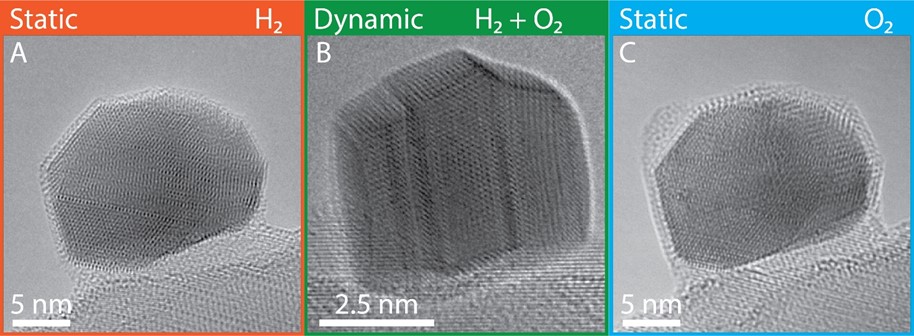Dynamics of nanoparticle motion and metal-oxide support in redox-reactive gases
In the early days of catalysis research, oxide carriers were considered to be mere inert carriers for highly dispersed metal nanoparticles. Forty years ago, experiments with noble metal-TiO2 catalysts demonstrated that oxide supports are far from inert in such catalytic systems and can strongly effect the adsorption behavior and structure of catalysts and the phenomenon was named the strong metal-support interaction (SMSI) [1]. SMSI was observed in noble metal catalysts supported on reducible oxides such as TiO2. This phenomenon is of paramount importance, since it can determine the catalytic activity and stability. The SMSI phenomenon has, for the most part, been characterized ex situ. Such an approach is not able to capture the ongoing dynamics of a working system. The dynamic interactions between noble metal particles and reducible metal-oxide supports can depend on redox reactions with ambient gases. In our work [2,3], operando transmission electron microscopy revealed that the SMSI–induced encapsulation of platinum particles on TiO2 observed under reducing conditions is lost once the system is exposed to a redox-reactive environment containing oxygen and hydrogen at a total pressure of ~1 bar. Destabilization of the metal–oxide interface and redox-mediated reconstructions of TiO2 lead to particle dynamics and directed particle migration that depend on nanoparticle orientation (Figure 1). A static encapsulated SMSI state was reestablished when switching back to purely oxidizing conditions. This work highlights the difference between reactive and nonreactive states and demonstrates that manifestations of the metal-support interaction strongly depend on the chemical environment.
